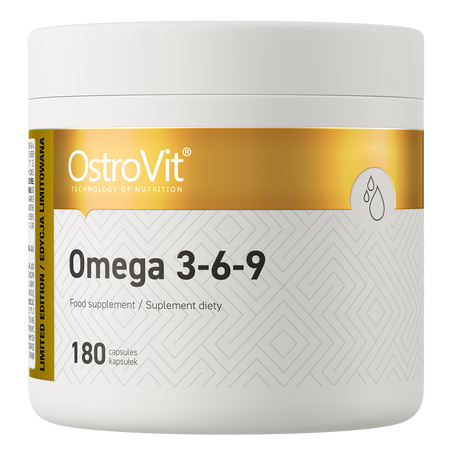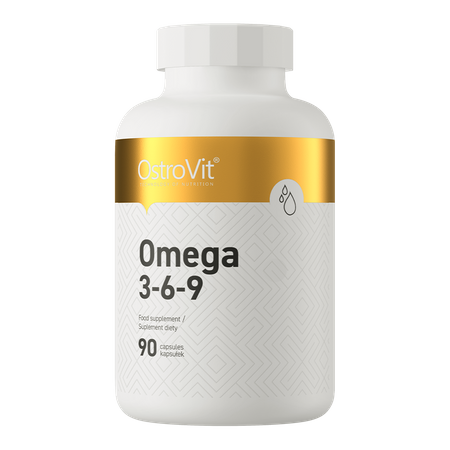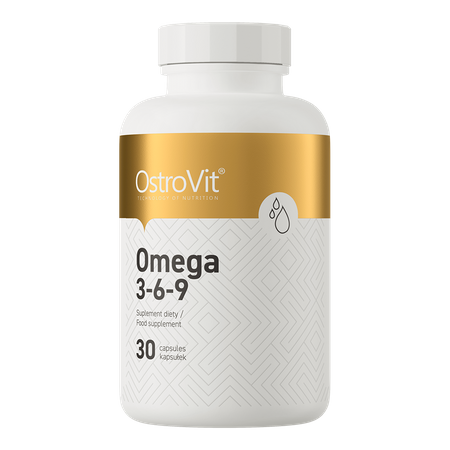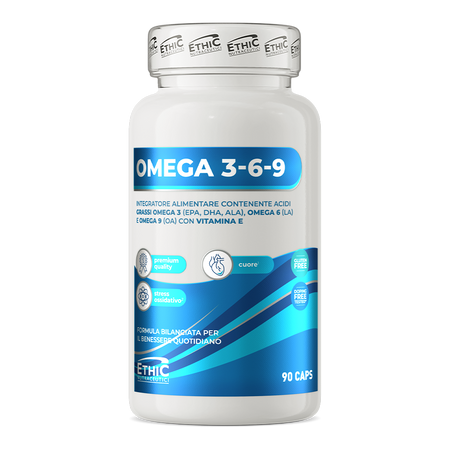Omega 3-6-9
Omega 3-6-9 fatty acids are called essential fatty acids. These are extremely important compounds for proper functioning, which must be delivered to the body along with the daily diet.
Consumed in the right proportions, omega 3-6-9 acids can positively affect the work of the heart, as well as brain activity.
What are omega 3-6-9?
Omega-3 and omega-6 fatty acids are polyunsaturated fatty acids that are referred to as essential fatty acids, because the human body can not synthesize them on its own. Therefore, they must be supplied to the body with the diet or, in case of increased demand, along with dietary supplements.
In turn, omega-9 fatty acids are classified as monounsaturated fatty acids, because they contain only one double bond. They also belong to essential fatty acids, however, with an adequate supply of omega-3 and omega-6, the body is able to synthesize this compound on its own.
Omega-3 fatty acids contain the first double bond at the third carbon atom. Similarly, omega-6 acids have such a bond at the sixth atom. In contrast, omega-9 acids have only one double bond, which occurs at the ninth carbon atom.
Among the omega-3 fatty acids, we can distinguish primarily docosahexaenoic acid (DHA) and eicosapentaenoic acid (EPA) and alpha-linolenic acid (ALA).
The group of omega-6 fatty acids includes, in turn, linoleic acid (LA), gamma-linolenic acid (GLA) and arachidonic acid (ARA).
The main representative of omega-9 fatty acids is oleic acid.
Sources of omega-3-6-9 fatty acids
Essential fatty acids must be supplied to the body with food. So what products should be included in the daily diet to supplement it with valuable omega-3-6-9 fatty acids?
Sources of omega-3 fatty acids
The rich sources of omega-3 acids include:
- oily sea fish (i.a. salmon, mackerel, sardines or sprats),
- walnuts,
- chia seeds,
- linseed,
- vegetable oils.
Sources of omega-6 fatty acids
Omega-6 fatty acids can be found primarily in products such as:
- vegetable oils, and above all linseed, soybean and corn oil,
- walnuts,
- sunflower seeds,
- almonds.
Sources of omega-9 fatty acids
Omega-9 fatty acids are found, like other acids in this group, mainly in vegetable oils, nuts and seeds. The richness of omega-9 can be found in:
- olive oil,
- in peanut or cashew nut oils,
- almonds,
- avocado,
- pistachios.
Properties of omega 3-6-9 acids
Both omega-3, omega-6 or omega-9 fatty acids are extremely important for the proper functioning of the human body.
Omega-3 fatty acids are often promoted as ingredients that support the proper functioning of the heart. These compounds can therefore have a positive effect on both the heart and blood vessels, supporting the work of the circulatory system. In addition, omega-3 fatty acids can have a positive effect on the well-being and functioning of the brain. Omega-3 fatty acids may also have anti-inflammatory effects.
Omega-6 fatty acids can have a positive effect on the work of the circulatory system and can also support the proper development of the nervous system in fetal life. In addition, omega-6 acids help maintain the proper condition of the skin, hair and nails. In excessive amounts, they may have a pro-inflammatory effect.
Omega-9 fatty acids can improve the condition of the skin and are the building blocks of every cell. They can also have a positive effect on the work of the heart, as well as on the work of the nervous system.
Demand for omega 3-6-9
According to the Nutrition Standards developed by the Institute of Food and Nutrition, a good and healthy solution is to reduce the supply of saturated fatty acids in favor of monounsaturated and polyunsaturated fatty acids.
At the level of sufficient intake (AI), the demand for DHA and EPA among adults was set at 250 mg per day, while among pregnant and lactating women the recommended value is 250 mg EPA and 100-200 mg DHA per day.
The demand for ALA was described at the level of 0.5% of energy from the diet, while for LA as 4% of energy from the diet.
For the remaining fatty acids, no reference intake value has been established, but the appropriate ratio of omega-3 to omega-6 acids is extremely important.
Omega-3 to omega-6 ratio
It is worth noting that in the daily diet we usually do not provide the necessary amounts of omega-3 fatty acids, but we exceed the demand for omega-6.
The correct ratio of omega-3 to omega-6 acids is 1:1, although this is extremely difficult to achieve. Therefore, it is assumed that the ratio of 1:2 to 1:5 is the correct proportion of fatty acids that can help us maintain good health.
Excess omega-6 acids can be pro-inflammatory. Unfortunately, in society, due to the significant consumption of processed foods, the ratio between omega-3 to omega-6 is often 1:10 or even 1:20. That is why it is so important to pay attention to the adequate supply of omega acids.


 Bestseller
Bestseller



